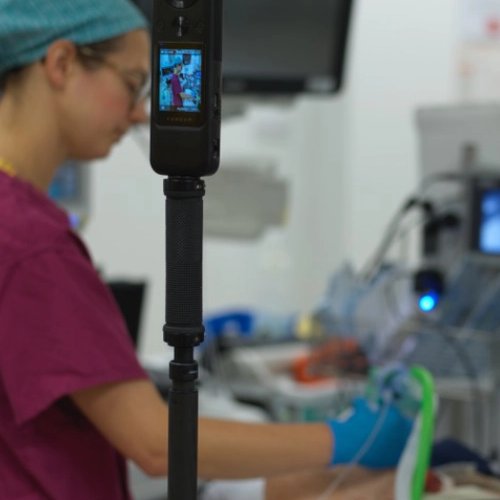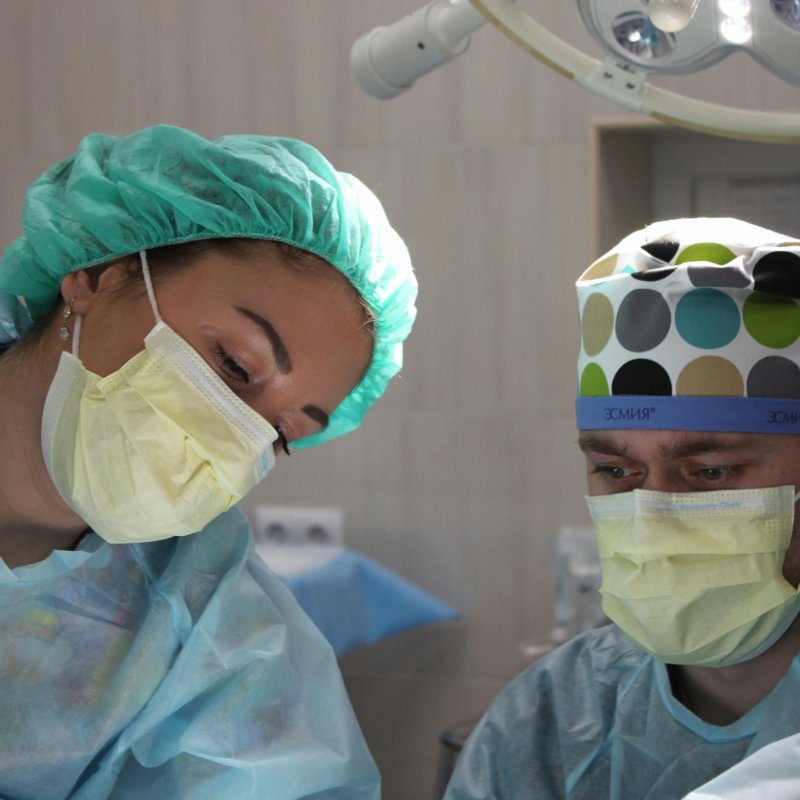Contact Us
+44 20 32897141 / 1 Pickle Mews, London, SW9 0FJ
How medical VR training is changing emergency training
Published
Apr 10, 2025
Tags
Virtual reality could transform how emergency training is delivered. It has the possibility to address the pressing resource restraints and deliver transformative learning at scale, to help build resilience in the emergency departments.
The emergency department is a dynamic, challenging, and high-pressure environment, where medical professionals respond to a stream of medical cases day in, day out. The scenarios they respond to can range from a patient’s loss of consciousness due to an injury or organ damage from trauma, which to treat effectively requires clinical reasoning, decision-making, and psychomotor skills that form the cornerstones of the delivery of safe and effective emergency medical care.
Training is vital to ensuring doctors and nurses are prepared for all eventualities, from responding to paediatric airway management to catastrophic bleeding control techniques.
However, whilst we can all recognise the importance of training in emergency medicine, we can also appreciate there are challenges and barriers that may hinder the delivery of effective training at scale.
The Rising Pressure of Emergency Departments
A&E departments across the NHS have been and continue to be under unprecedented pressure, exacerbated by chronic underfunding, lack of sustained investment, and a shortfall of beds. This has subsequently placed a significant burden on A&E staff leading to a retention crisis, which according to the Royal College of Emergency Medicine, dates back a decade.
The sustained pressures that A&E departments are facing are taking a significant toll on patients, with wait times increasing to an average of 4 hours and vulnerable patients unable to be transferred out of the hospital due to the backlog in health and social care. However, the ripple effect is not contained to patients either, the pressure faced by the department and the emergency medicine workforce means that training staff to the standard that is required is becoming increasingly difficult. Doctors with the expertise to teach simply don’t have a consistent allotment of time to dedicate to training.
According to the Royal College of Emergency Medicine (RCEM), more than 700 new trainee doctors are needed to avert the staffing crisis in Emergency Departments. In a report published in 2023, they found that Emergency Medicine trainee doctors currently make up 45% of the total Emergency Medicine workforce which poses a potential threat to service provision, but also means that the level of trainees is practically proportionate to the level of trainers. To further compound this, the pool of consultants is ageing with 29% of RCEM’s consultant members now aged over 50, approaching retirement in the near future, which will further limit the number of trainers.
Training the Next Generation of EM Doctors
It is crucial to ensure the next generation of emergency doctors is ready to take the place of those leaving the workforce. Right now, traditional high-fidelity simulation is considered the gold-standard of emergency skills training. Traditional simulation training occurs in a variety of settings, utilising a wide range of techniques, which can include the use of physical mannequins, part-task trainers, table-top exercises, cadavers, role-play, or in-situ techniques.
However, opportunities such as these are becoming slim due to facilitator expertise, availability, or high costs, meaning EM trainees are not being given the chance to hone specialist skills and build competency and muscle memory that is vital to emergency procedures.
Virtual reality could transform how emergency training is delivered. It has the possibility to address the pressing resource restraints and deliver transformative learning at scale, to help build resilience in the emergency departments.
How VR Can Elevate Emergency Training
In a systematic review of virtual reality in simulation-based emergency skills training, it found that there may be an educational benefit, including knowledge gain and retention, skill performance, acceptability, usability, and validity. By immersing themselves in a virtual reality through head-mounted display, the participants were able to train in a variety of areas such as emergency medicine, equipment training, obstetrics, and basic/advanced life support. Virtual reality has the potential to simulate emergency scenarios where learners are truly immersed to enable them to interact and practice before real-life scenarios emerge.
Clinical skill development is a complex interplay between theoretical knowledge, cognitive ability, and motor skill development and implementing virtual reality into training programmes can scale learning and support each of these facets. Traditional emergency training models will always be necessary, but VR can act as a supplementary format to support existing training programmes, delivering the following advantages to high-pressured emergency environments:
- Immersion & Realism – Through ExR’s combination of 360-degree filming and augmented reality, we are able to deliver dynamic and engaging 3D environments that replicate real-life scenarios.
- Versatility & Adaptability – Approaches like mannequin simulation limit the educator to a physical, pre-defined model, whereas VR has limitless capability to change, update, and expand features.
- Accessibility – VR can be a highly accessible emergency training format, especially when approached our way. We seek to democratise access to medical virtual reality, and do this by offering our solution free to all NHS medical professionals and ensuring all films can be watched via the browser to further eliminate barriers surrounding headsets.
Immersive Rare Event Training
In the same systematic review that was discussed earlier published by Abbas et al., a key theme was identified; VR education was targeted towards rare event training. Several factors contribute to the challenge of simulating rare emergency events with high-fidelity, including the cost of live acting, technologically advanced mannequins and high-quality make-up art, all requiring to be in-situ. In these circumstances, virtual reality is best placed to deliver repetitive emergency training to ensure knowledge and skill retention exists beyond 2-6 months.
At ExR, we look to develop critical emergency training in collaboration with hospitals, to prepare their workforce with the vital knowledge and competencies they need to respond quickly and effectively to any scenario they are presented with. For example, we partnered with Alder Hey Children’s Hospital to develop a collection of Paediatric Trauma Scenarios so that doctors and nurses knew how the multi-disciplinary team (MDT) responds to complex trauma scenarios. This content is planned to be deployed in nationally mandated head and neck surgery trauma courses.
Virtual reality can reinvent how hospitals’ A&E departments conduct emergency training, giving them the power of immersive education with limitless repeatability. Through co-creation, ExR has the capability to scale VR emergency training across every A&E department in the country.
To discover how you can implement VR emergency training into your curriculum, speak to our team today.
Most recent posts
Like what you read?
Please get in touch with us.



